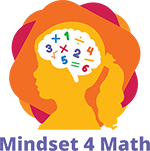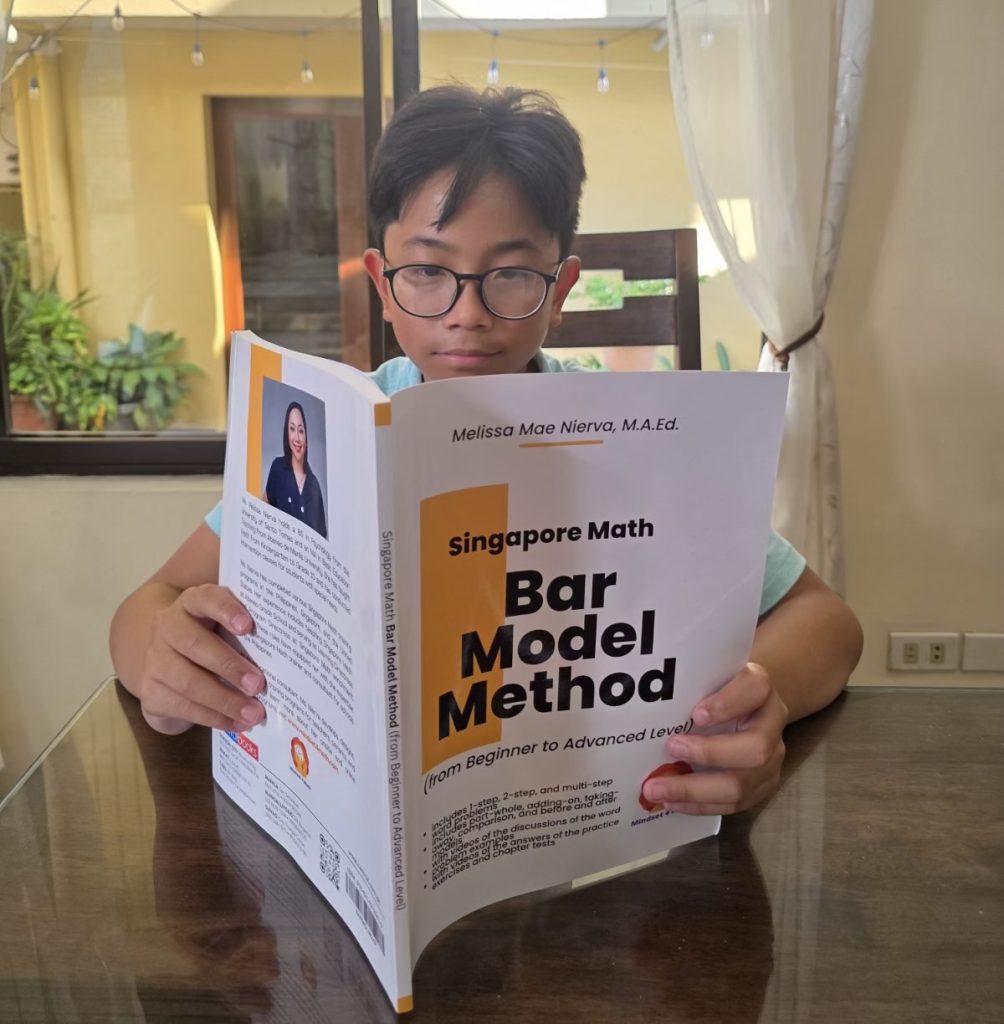Is your child struggling with Math word problems?
Discover the Singapore Math bar model method.
Are math word problems a source of stress for your child?
Do they hate it when the math homework requires them to solve problems?
You’re not alone.
As a math teacher working with students from Kindergarten through Grade 10, I’ve witnessed the confusion firsthand—furrowed brows, hesitant hands, and the all-too-familiar question: “What am I supposed to do?” Many students struggle to decode word problems, mix up numbers, misread details, or feel overwhelmed before they even begin.
But there’s a solution that works: the Singapore Math Bar Model Method—a visual problem-solving strategy that builds deep mathematical understanding and transforms struggling students into confident problem solvers.
What is the Singapore Math Bar Model Method?
The bar model method is a core feature of the internationally acclaimed Singapore Math curriculum. It uses rectangular bars to visually represent known and unknown quantities in a math word problem. This helps children “see” the relationships between values before they move to abstract computation.
Aligned with the Concrete–Pictorial–Abstract (CPA) learning approach, the bar model bridges the gap between real-life situations and mathematical thinking, making abstract concepts more tangible and easier to understand.
Why Use the Bar Model Method? Key Benefits
✅ Visualizes word problems
The bar model helps students visualize what the problem is about by turning words into pictures. Instead of diving into operations right away, children can clearly see the problem structure using bars that represent quantities.
✅ Improves problem-solving strategies
By representing the problem visually, students can more easily identify what steps to take and which operations to apply—addition, subtraction, multiplication, or division.
✅ Builds a strong foundation for algebra
Before students are introduced to algebraic symbols like “x” or “y,” bar models allow them to understand unknowns as missing parts or missing wholes in the visual model. This helps ease the transition to algebra later on.
Watch this video to understand how bar modeling can help students understand algebra.
✅ Clarifies abstract math topics or lessons
From fractions and decimals to ratios, rates, and percentages, bar models make complex math topics easier to grasp.
The video below shows how bar modeling can help solve word problems involving fractions.
Types of Bar Models in Singapore Math
-
Part-Whole Model
This model shows how a whole is made up of parts. It’s useful for basic addition, subtraction, and understanding composition.
Watch this video to see how to use a part-whole model to solve a word problem.
-
Comparison Model
Used to compare quantities—how much more, less, or how many times one quantity is compared to another.
-
Fractions Model
Helps students understand fractions as parts of a whole, making it easier to compare and operate with fractions.
-
Ratio Model
Visualizes the relationship between two or more quantities, perfect for solving ratio word problems.
Here is an example of how the ratio bar model can help solve a ratio word problem more easily.
-
Percentage Model
A visual representation used to solve percentage problems. It represents the whole as a bar labeled 100% and breaks it into sections to show known and unknown percentages, helping students understand part-to-whole relationships.
Watch this video of solving a percentage word problem using the percentage bar model.
-
Before-and-After Model
Illustrates changes over time—ideal for word problems involving increases, decreases, or redistributions.
How to Teach the Bar Model Method (Step-by-Step)
- Read the problem carefully
Understand what’s happening before drawing anything. - Identify key information
Ask: What is known? What is unknown? What action is being described? - Draw the bar model
Sketch bars to represent the quantities in the problem. - Label known values
Include units and brief labels. - Mark the unknown
Use a question mark (?) to highlight what needs to be solved. - Write the equation
Translate the bar model into a number sentence or algebraic equation.
Common Mistakes & How to Avoid Them
1. Not Understanding the Problem Before Drawing
- Mistake: Students rush to draw bars without fully understanding what the problem is asking.
- Why It Happens: They’re trained to “draw something quickly” and treat the model like a guessing game.
- How to Fix It:
- Encourage reading the problem twice.
- Highlight key information: Who? What? How many? What’s the question?
- Teach students to verbalize the situation before grabbing a pencil.
2. Incorrect Bar Proportions
- Mistake: Bars are drawn with random lengths that don’t reflect actual relationships.
- Why It Happens: Students aren’t thinking proportionally—they’re drawing to “fill space” rather than reflect meaning.
- How to Fix It:
- Use consistent units (e.g., 1 square = 1 unit) for equal numbers or equal parts.
- Keep bar lengths relative to each other.
- When estimating, at least maintain visual proportionality (e.g., if one person has 20 more, the bar should be visibly longer).
3. Mislabeling or Leaving Out Labels
- Mistake: Bars are either not labeled correctly or completely, making their representations unclear.
- Why It Happens: Students assume they’ll remember which bar means what—or don’t know how to label it correctly.
- How to Fix It:
- Always label:
- Each bar (name or group it represents)
- Known values
- Unknowns with a question mark (?)
- Include units of measurement (e.g., apples, dollars, minutes)
4. Using the Wrong Bar Model
- Mistake: Students apply a part-whole model when the problem is actually a comparison—or use a before-and-after model when it’s unnecessary.
- Why It Happens: Children sometimes rely only on clue words to choose a model.
- How to Fix It:
- Teach students to ask themselves questions like these to determine what model to use:
- Is this problem talking about parts and wholes? → Part-whole model
- Are we comparing quantities in this problem? → Comparison model
- Did something change over time? → Before-and-After
- Provide examples and practice classifying before drawing.
5. Forgetting to Relate the Model Back to the Question
- Mistake: Students draw a perfect bar model, solve for something but not what the question is actually asking.
- Why It Happens: They get caught up in “solving” without confirming what needs to be found.
- How to Fix It:
- After solving, re-read the question.
- Check: “Did I solve for what the question is asking?”
- Write a complete sentence answer to ensure the model and solution match the question.
6. Using the Bar Model but Skipping the Equation
- Mistake: Some students rely too much on the picture and never translate it into an equation or number sentence.
- Why It Happens: They think the model is the solution, not a step toward it.
- How to Fix It:
- Teach that the bar models help build the equation—but don’t replace it.
- Practice going from model → equation → solution → answer.
- Remind students to ask: “Can I compute now?”
Tips for Parents and Teachers: How to Teach Bar Modeling Effectively
- Start with real-life examples
Use concrete objects to build understanding before drawing bars. - Teach different bar model types
Give students exposure to various model types and when to use them. - Use guided practice
Walk through problems together. Encourage thinking aloud and reflective questioning. Structure the starting session like this:
-
-
- Read the problem together
- Discuss what is known and unknown
- Choose the correct model type
- Draw the bar model together
- Solve and write the number sentence
- Reflect: Does the answer make sense?
-
- Encourage students to talk through their thinking.
Ask:
-
-
- “What does this part of the bar show?”
- “What are we trying to find?”
-
- Discuss mistakes openly
Create a safe space for error analysis. It’s one of the best ways to learn.
Frequently Asked Questions (FAQs)
Q: What age is appropriate for the Bar Model Method?
Children as young as 6 can begin with basic part-whole models. The method grows with them through upper elementary and even middle school.
Q: What types of math problems can be solved with bar models?
Bar modeling works well for:
- Basic operations (addition, subtraction, multiplication, division)
- Fractions, ratios, percentages
- Multi-step and algebraic problems
- Word problems of all complexity levels
Q: Do I need to be good at math to teach this?
Not at all! With step-by-step tools and resources like our e-book and on-demand webinar, both parents and teachers can learn alongside their children.
Learn More & Get Started

Singapore Math Bar Model Method Book
Includes:
-1-step, 2-step, and multi-step word problems
-part-whole, adding-on, taking-away, comparison, and before and after models
-videos of the discussion of the word problem examples
-videos of the answers of the practice exercises and chapter tests
To purchase the e-book, click this link.
To order the printed book, click this link.
The book is also available at Shopee and Lazada.

Bar Model Method On-Demand Webinar
Learn how to teach bar modeling at home or in the classroom.
Enroll in Mindset 4 Math’s Bar Model Method online training for parents and teachers to get started today!
New to Singapore Math?
Read our blog: What is Singapore Math? A Complete Guide for Parents
Having trouble teaching the Singapore Math way?

Bonus Webinar: How to Teach Children Singapore Math
Great for both new and experienced educators and parents.
Final Thoughts: Making Math Make Sense
The Singapore Math Bar Model Method turns frustration into clarity. With the right visual tools, your child can gain confidence, improve problem-solving skills, and even enjoy math.
Need personalized support?
Schedule a free one-on-one consultation. Together, we can build a strong math foundation for your child or students.
Let’s make math meaningful—and even enjoyable—for every child.

